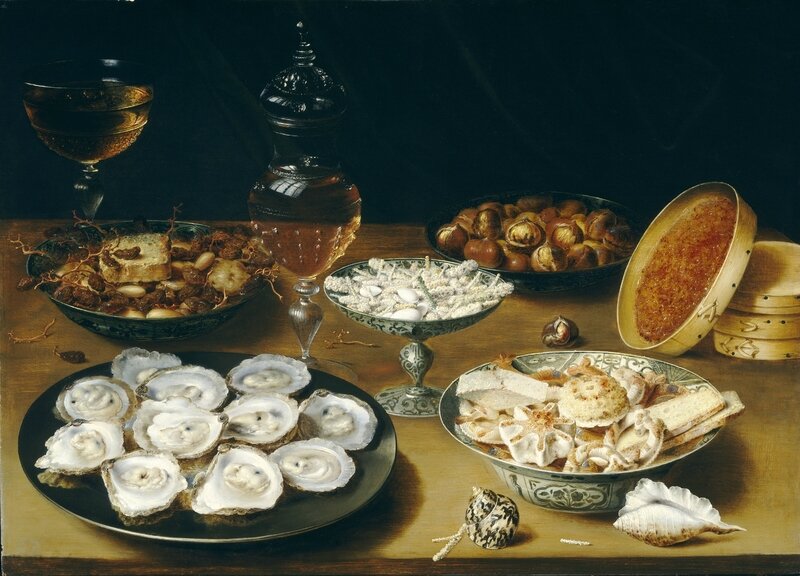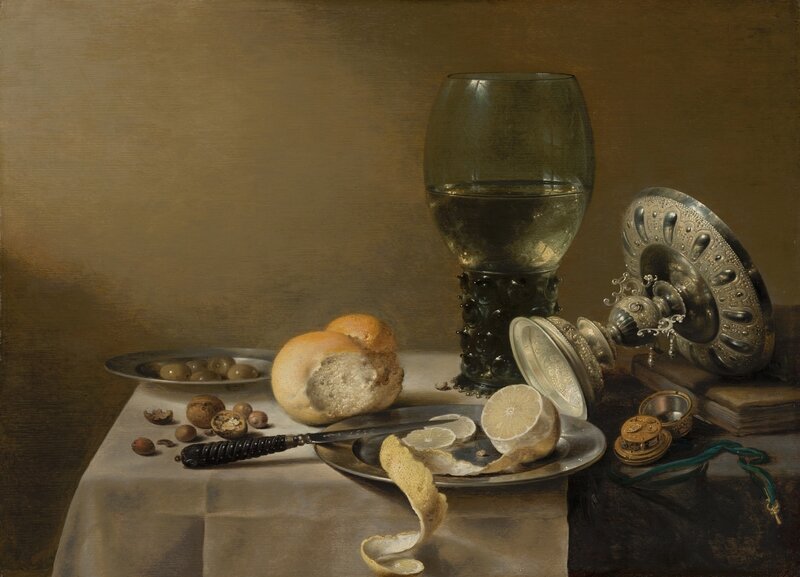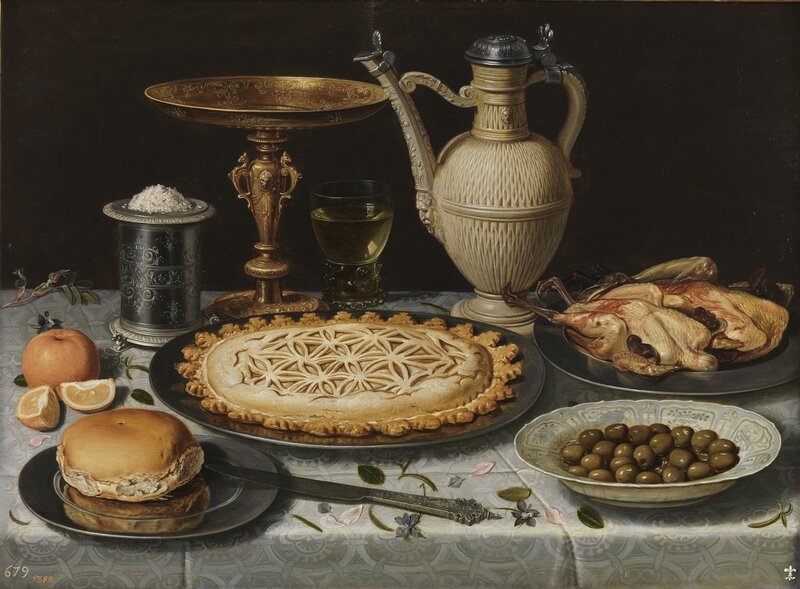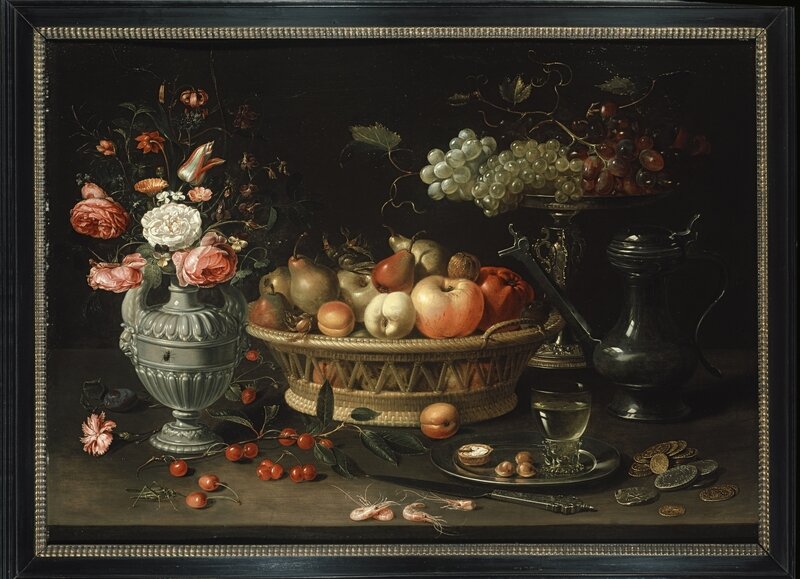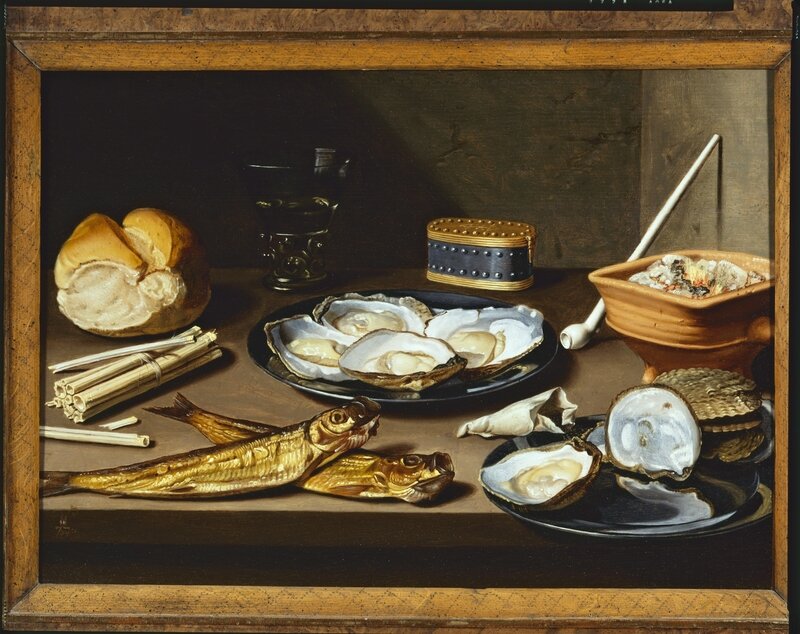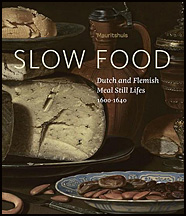From 9 March through 25 June 2017 the Mauritshuis presents Slow Food: Still Lifes of the Golden Age,
the first exhibition to be devoted to the development of meal still
lifes in Holland and Flanders from 1600 onwards. The cornerstone of the
exhibition is a masterpiece acquired by the museum in 2012, Still Life with Cheeses, Almonds and Pretzels
by Clara Peeters.
The exhibition features 22 masterpieces from Washington’s National Gallery of Art, Rijksmuseum Amsterdam, Oxford’s Ashmolean Museum among others including all the works by Peeters from the Museo Nacional del Prado in Madrid.
The exhibition features 22 masterpieces from Washington’s National Gallery of Art, Rijksmuseum Amsterdam, Oxford’s Ashmolean Museum among others including all the works by Peeters from the Museo Nacional del Prado in Madrid.
The meal still life – a subset of the genre that shows prepared
food laid out on a table without figures in the composition - originated
around 1600 with painters in Antwerp such as Clara Peeters and Osias
Beert. Haarlem-based painters such as Floris van Dijck and Nicolaes
Gillis followed them shortly thereafter. Meal still lifes showing richly
set tables piled high with tempting morsels and precious objects became
increasingly popular in the first decades of the seventeenth century.
Various artists eagerly devoted themselves to depicting the objects on
display in great detail. The exhibition in the Mauritshuis features
paintings from the early years of this genre, the period 1600-1640.
Astonishing detail
Masters of the meal still life depicted refined delicacies such as fish, oysters, prawns, cheese, bread, olives and nuts, offset by fine glassware, gilded goblets, pottery jugs or oriental porcelain. The way in which the details have been rendered is a feat of extraordinary precision, as is the play of light on the various materials. Peeters succeeds in replicating the somewhat crumbly texture of the biggest cheese and the creaminess of the butter curls on the plate with great accuracy in her
Still Life with Cheeses, Almonds and Pretzels.
The delicate play of light on the blade of the knife is also beautifully rendered. Virtuosity is also on display in the work of Claesz and Heda.
In Heda’s impressive Still Life with Gilt Goblet dated 1635, for example, the suggestion of reflected light on the large glass is magnificent. The glass not only reflects the rays of light coming in through a window, but also the muted sheen of a silver tazza (shallow drinking bowl) and a gilded goblet. The reflection resembles a fine mesh on the glass and is a superb example of the craftsmanship that is so characteristic of these early meal still lifes.
Pieter Claesz (Berchem 1597/98-1660 Haarlem), Still Life with Roemer, Tazza, and Watch, 1636, oil on panel, 44 x 61 cm (17 5/16 x 24 in.), Royal Picture Gallery, Mauritshuis, The Hague, on long-term loan from the Friends of the Mauritshuis Foundation (Gift of Willem Baron van Dedem)
Clara Peeters (Active in Antwerpen, c.1607-1621 of later), Table with Cloth, Salt Cellar, Gilt Standing Cup, Pie, Jug, Porcelain Plate with Olives and Cooked Fowl, c.1611, oil on panel, 55 x 73 cm. Madrid, Museo Nacional del Prado.
For the duration of the exhibition there will be a greenhouse on the square of the Mauritshuis: Taste Station MH.
Astonishing detail
Masters of the meal still life depicted refined delicacies such as fish, oysters, prawns, cheese, bread, olives and nuts, offset by fine glassware, gilded goblets, pottery jugs or oriental porcelain. The way in which the details have been rendered is a feat of extraordinary precision, as is the play of light on the various materials. Peeters succeeds in replicating the somewhat crumbly texture of the biggest cheese and the creaminess of the butter curls on the plate with great accuracy in her
Still Life with Cheeses, Almonds and Pretzels.
The delicate play of light on the blade of the knife is also beautifully rendered. Virtuosity is also on display in the work of Claesz and Heda.
In Heda’s impressive Still Life with Gilt Goblet dated 1635, for example, the suggestion of reflected light on the large glass is magnificent. The glass not only reflects the rays of light coming in through a window, but also the muted sheen of a silver tazza (shallow drinking bowl) and a gilded goblet. The reflection resembles a fine mesh on the glass and is a superb example of the craftsmanship that is so characteristic of these early meal still lifes.
Interpretation
The delicacies and precious objects shown in the meal still lifes evoke a utopian world free of hunger and need. The paintings often incorporate a sense of mortality, of the transience of earthly life. This vanitas symbolism is made explicit in the meal still lifes by Claesz and Heda, each of whom include a timepiece in their compositions. At the same time, a good meal also symbolises prosperity and well-being. It is possible that the cornucopia of food shown in the paintings was also intended as an exhortation to moderation. In a number of paintings by Peeters, for example, a knife with the word ‘TEMP[ERANTIA]’ (moderation) on its blade figures prominently. Her aim may have been to impart a deeper meaning to her compositions.
Osias Beert (Antwerpen? c.1580-1623 Antwerpen), Dishes with Oysters, Fruit, and Wine, c.1610-1620, oil on panel, 53 x 73 cm. Washington, National Gallery of Art, Patrons’ Permanent Fund
Pieter Claesz (Berchem 1597/98-1660 Haarlem), Still Life with Roemer, Tazza, and Watch, 1636, oil on panel, 44 x 61 cm (17 5/16 x 24 in.), Royal Picture Gallery, Mauritshuis, The Hague, on long-term loan from the Friends of the Mauritshuis Foundation (Gift of Willem Baron van Dedem)
Clara Peeters (Active in Antwerpen, c.1607-1621 of later), Table with Cloth, Salt Cellar, Gilt Standing Cup, Pie, Jug, Porcelain Plate with Olives and Cooked Fowl, c.1611, oil on panel, 55 x 73 cm. Madrid, Museo Nacional del Prado.
For the duration of the exhibition there will be a greenhouse on the square of the Mauritshuis: Taste Station MH.
Clara Peeters (Active in Antwerpen, c.1607-1621 of later), Still life with fruits and flowers, c.1612-1613. Cooper, 64 x 89 cm, Oxford, Ashmolean Museum, Bequeathed by Daisy Linda Ward, 1939
Floris van Schooten (Haarlem? c.1585/88-1656 Haarlem), Still Life with herring and oysters, c.1625-1630, oil on panel, 35 x 49 cm, Haarlem, Frans Hals Museum, purchased with support from "Donation Drs. J-P. de Man "and the Rembrandt Society, 2011
Detail: Floris van Schooten, Still Life with Pewter Flagon and Basket of Cheese, c.1623-1625
Private collection. Now on view in the Mauritshuis
Joachim Beuckelaer "Kitchen Scene with Christ at Emmaus" Now on view in the Mauritshuis


